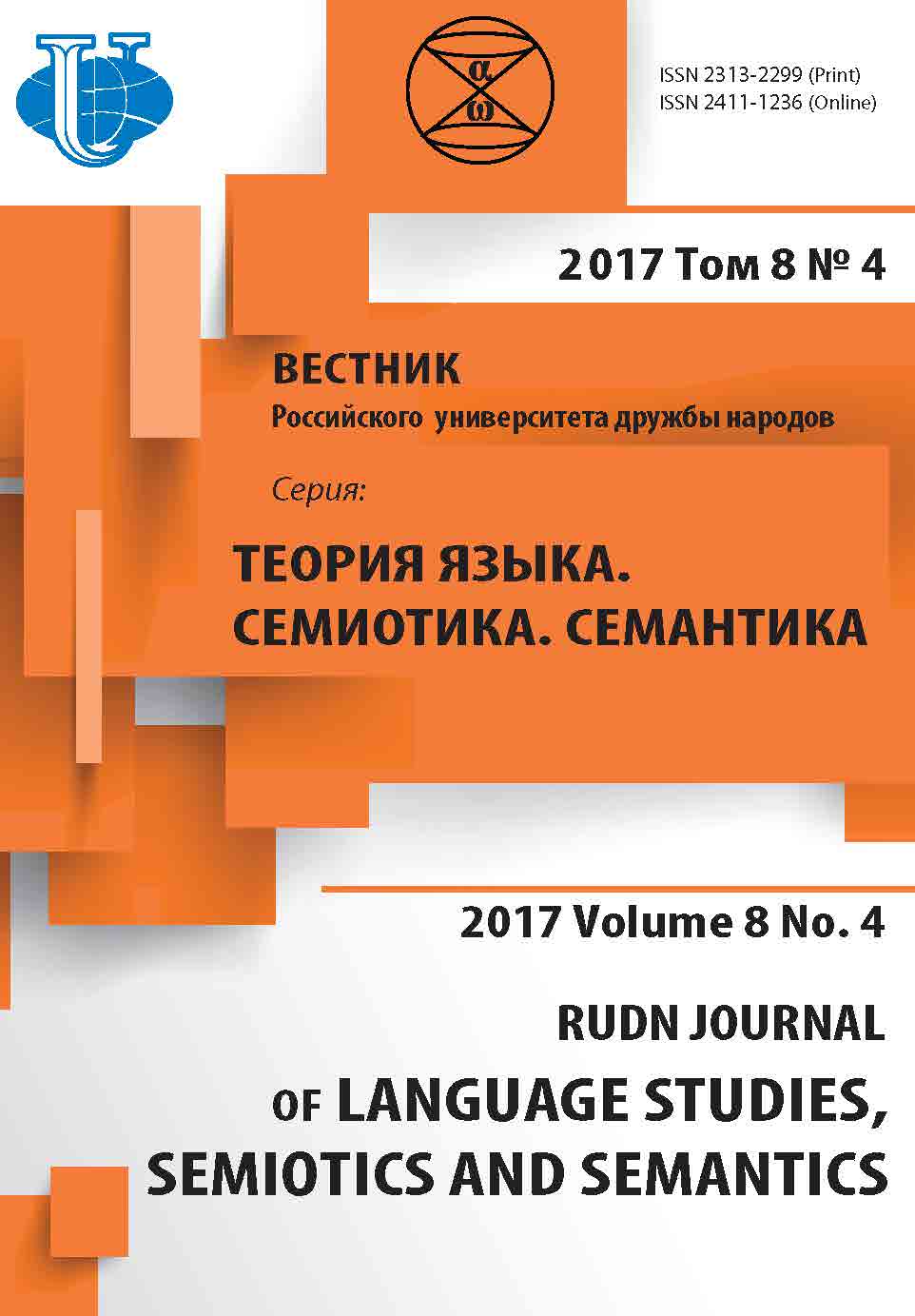THE EXPRESSION OF THE CONCEPT OF POSSESSION IN THE ENGLISH LANGUAGE BY MEANS OF THE ABSOLUTE FORM OF THE GENITIVE CASE AND ITS EQUIVALENTS IN THE AZERBAIJANI LANGUAGE
- Authors: Akhmedova ZM1
-
Affiliations:
- Baku State University
- Issue: Vol 8, No 4 (2017)
- Pages: 963-974
- Section: Articles
- URL: https://journals.rudn.ru/semiotics-semantics/article/view/17975
- DOI: https://doi.org/10.22363/2313-2299-2017-8-4-963-974
Cite item
Full Text
Abstract
The Azerbaijani and English languages, drawn to the study, belong to different language families from the point of view of morphological and genealogical structure. Therefore, the expression of the concept of possession reveals some similar and distinctive features between these languages. Posses-sion is expressed by special means in every language. The essence of the concept of possession can be more clearly seen in the field of the case system, which is mainly embodied in the genitive case. Some fea-tures that are common to all languages are considered to be universal, for instance, personal pronouns (possessive constructions) and possessive case endings. This article deals with the absolute form of the genitive case, one of the means of expressing the concept of possession in the English language, and its equivalents in the Azerbaijani language. The scientific novelty of the article is that although the absolute form of the genitive case has been studied in the English language to a certain extent, the equivalents of this form in the Azerbaijani language have not become the objects of typological research so far; similar and distinctive features inherent in these equivalents have not been compared. From this point of view, this article has an important significance and can be considered one of the first steps in the field of comparative study of the Azerbaijani and English languages.
About the authors
Z M Akhmedova
Baku State University
Author for correspondence.
Email: zahrahmadova@gmail.com
Zahra Mirzaaga Akhmedova, thesis of the English language department for the Humanities faculties Baku State University; Scientific interests: theoretical and syntactic grammar, comparative grammar
1148, Azerbaijan, Baku, Z. Khalilova St., 23References
- Akbulatova, A.M. (1984). Genitive case in the sentence structure of modern English. Kand. diss. Leningrad. (in Russ.).
- Afanasiev, P.A. (2001). Theoretical grammar of the English language. T.: Espero, 2001. 128 p. (in Russ.).
- Barkhudarov, L.S., Shteling, D.A. English grammar. Moscow: Higher School, 1973, 423 p. (in Russ.).
- Dmitriev, N.K. Category of belonging. In: “Studies on the Comparative Grammar of Turkic Languages”, Morphology, Part 2, M.—L.: 1956, p. 22—37 (in Russ.).
- Ivanova, T.A. (1975). About the content of the category of possessiveness. Bulletin of the LU, No. 8, History, language, literature, 2, 1975, p. 171—174 (in Russ.).
- Seliverstova, О.N. (2004). Contrastive syntactic semantics. Experience of description In Works on semantics. Мoscow: 2004. 152 (in Russ.).
- Theory of functional grammar. (1996). Lokativnost. Beingness. Possession. Conditionality / Response. Ed. A.V. Bondarko. St. Petersburg: Science. (in Russ.).
- Tseitlin, S.N. (2007). Semantic category of posessivnosti in Russian and its development by the child In Semantic categories in children’s speech: a collection. St. Petersburg: Nestor-history. (in Russ.).
- Abdullayeva, G. (2013). Contemporary Azerbaijani Language. Part II (Morphology, syntax). Baku. (in Аzeri.).
- Jafarov, S. (1960). Creativity in Azerbaijani language. Azerbaijan University Publishing House. Baku. (in Аzeri.)
- Huseynzadeh, M. (2007). The modern Azerbaijani language. Part III, Baku: East—West. (in Аzeri.).
- Huseynzade, M. (1957). Modern and complicated word combinations in modern Azerbaijani language. Baku: ADU publishing house. (in Аzeri.).
- Khalilov, B. (2007). Morphology of contemporary Azerbaijani language. Part I. Baku: Nurlan. (in Аzeri.).
- Kazimov, G. (2010). The modern Azerbaijani language. Morphology. Baku. (in Аzeri.).
- Nabiyeva, N. (2005). Complex names in Modern English and Azerbaijani. Baku. (in Аzeri.).
- Seyidov, Y. (2006). Grammar of Azerbaijani Language. Morphology. Baku: Baku Univ Publishing. (in Аzeri.).













